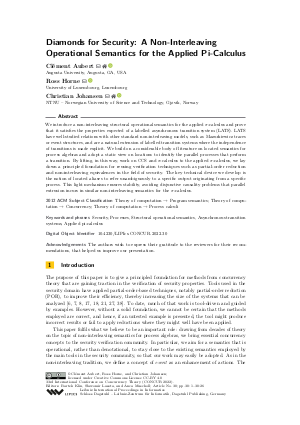LIPIcs.CONCUR.2022.30.pdf
- Filesize: 1.6 MB
- 26 pages

 Creative Commons Attribution 4.0 International license
Creative Commons Attribution 4.0 International license








Feedback for Dagstuhl Publishing